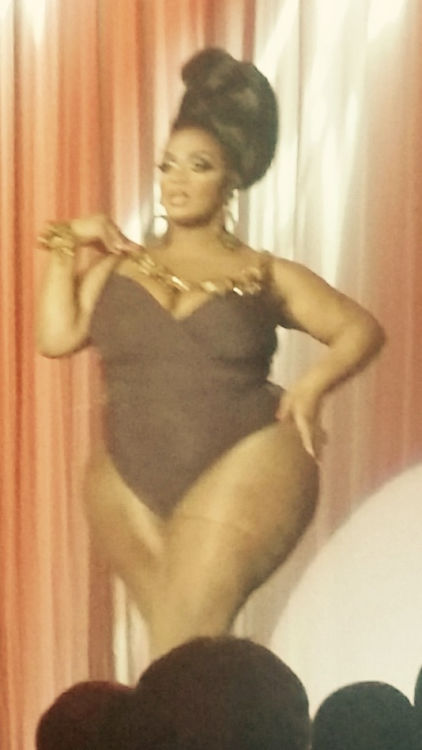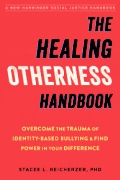The magic of drag pageantry has held me spellbound ever since that day, many years ago, when I saw San Antonio’s Shady Lady perform Nancy Sinatra’s “These Boots Are Made For Walking” on the night she won Miss Gay Texas USA at Large. Drag pageants are true theater; and the entertainers who act, sing, dance, and lip sync in a chance to win the crown are my heroes.
So it is with Miss Continental Plus, which has become an annual rite for we drag pageant fans who camp out for 5 hours or so each Easter Monday for Finals Night. (The “Plus” means that the pageant is specifically for contestants who are 200 pounds and/or 6 feet tall or more. There’s another pageant during Labor Day weekend for the non-plus sized queens). Contestants compete in four categories: talent, evening, personal interview, and swimsuit.
Let’s take a step back now and recall that we’re talking about people who were born male but who, through the magic of padding or surgeries, create curvy feminine bodies (or at least the illusion thereof). Augmenting and feminizing the shape of a large genetically male body requires a substantial amount of effort; but more importantly, it takes confidence and an ability to own one’s body size exactly as it is. For a queen or transwoman (I’ll break this down at the end of the blog), it all begins with body acceptance.
Ah, acceptance: the thing with which we all struggle. Learning shame for our differences as children, adults of all genders, races, and sizes struggle well into adulthood loathing some aspect of our bodies. Eyes, noses, teeth, hair, skin coloration, scars, feet that are big or legs that are short…we learn early on what it means to feel different, cast out, Other. But if we look to people who have consciously made a decision to accept their bodies, we begin to realize our own possibilities to do the same.
To put this in perspective, let’s imagine the journey of a little boy who perhaps never fit in with other boys; or who maybe have never felt at home in his own body. He was probably picked on for being different; perhaps even severely abused. Growing up, he may have had to leave home early to find a world where he wasn’t humiliated, ridiculed, hated. If he’s lucky, he finds his way into the drag community; but being bigger than some of the other girls, he has to learn to make do with shoes that don’t fit and dresses that aren’t long or stretchy enough. He had to learn how to contour and paint his face; how to sculpt his body and proportion his wigs. He also has to do it on the cheap; for unless he manages to land a really good day job, he’s reliant on his drag career to pay for everything.
Imagine next that our queen realizes she never felt at home in a man’s body, and that the only time she feels a sense of joy comes when she is in her drag persona. Maybe she has others around her who get it and support her, maybe not. She has to find a way to access the medical care she needs: hormones, body augmentation. If she can’t afford what’s offered by the medical profession, she uses the black market, maybe including liquid silicone injections. She often cries herself to sleep, feeling alone and scared, wondering why life is so difficult. She may look at her body and only see it in all of the ways it will never be the same as a “real” woman’s.
At some point though, even if just for a moment of clarity, she lifts up her tear-stained face and sees herself in the mirror, as if for the first time. She looks down at that size 13 foot with its blisters and calluses from the shoe that’s only a 12. She glances at her thinning hair, her thickset body, or her heavy beard stubble.
And she says to herself and to the world, “I am beautiful. And if I don’t learn to believe that, no one else will.”
And on that stage in that bathing suit that shows her curves to perfection, she is the queen. She hears our cheers and applause, sees us jump up from our seats and snap our fingers or wave our hands to signify our appreciation of her fabulousness. She owns every bit of it.
If she can do that, what keeps the rest of us from loving ourselves exactly as we are today?
Each day is our pageant; and the sidewalks, hallways, and shop floors where we walk are our runways. If we let ourselves believe that we are all queens, what new possibilities might we create? How might we learn to treat ourselves?
For those who are thoroughly confused about the differences between drag queens and transgender women: What we call ‘drag’ (DRessed As Girls) traditionally refers to men who dress in women’s clothing for the purpose of entertainment. As drag culture has primarily evolved within the gay bar scene, gay men make up the vast majority of drag entertainers. Not all drag queens are entertainers, preferring just to head out in drag as a matter of personal expression and because it’s fun to be glamorous.
Some drag queens recognize that they are most at home when they are in their female persona, and may decide that they wish to live this way all the time. This was true for me. These ladies may take hormones and have surgical procedures to transition their bodies from male to female. If they enjoy the creative outlet that drag performance gives them, or rely on it as a source of income, they may continue to work as drag entertainers. In these cases, their augmented bodies are sometimes are a feature of their performance.


